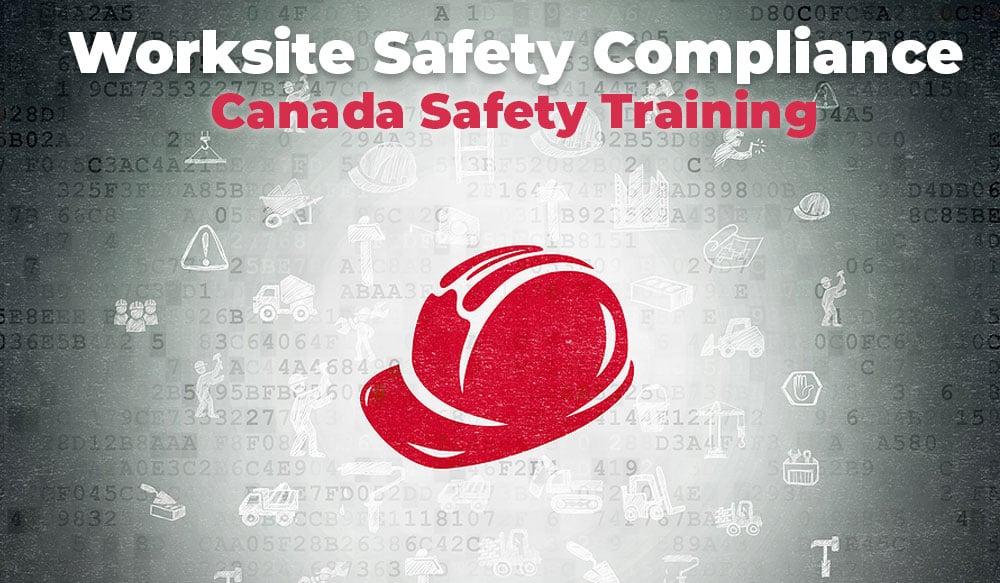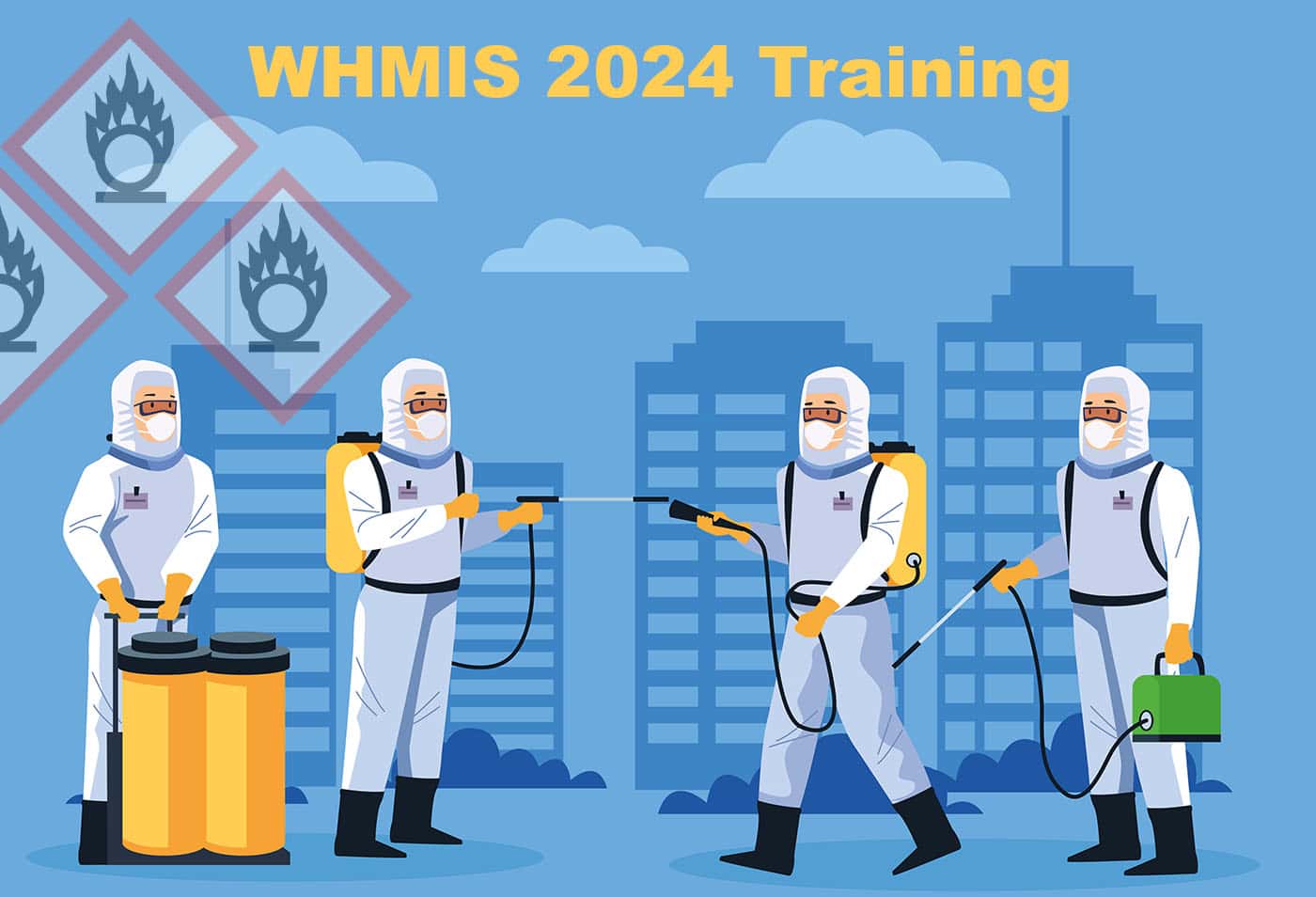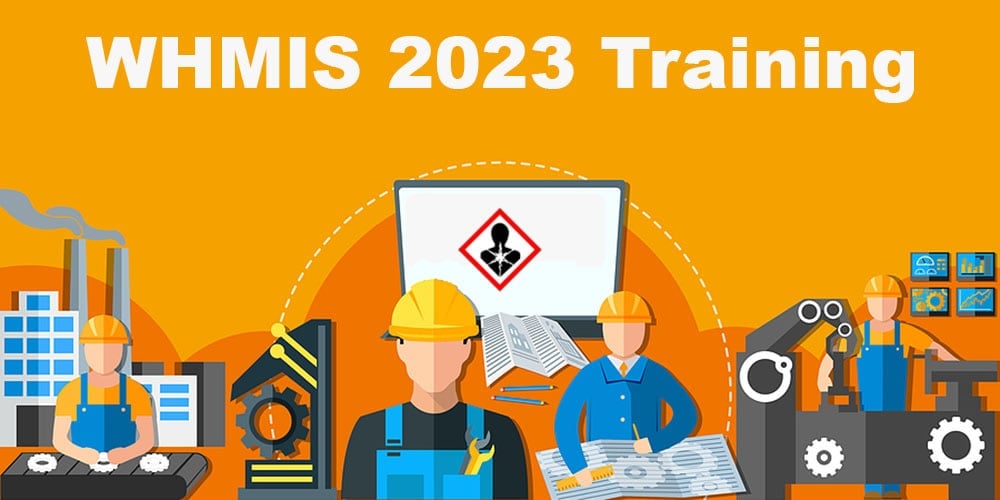Worksite Safety Compliance | Canada Safety Training Compliance Requirements
Regardless of the jurisdiction that you’re company is located in, there are several measures that need to be taken to stay compliant with safety legislation and regulations. One of the most effective measures to accomplish and maintain worksite safety compliance is: Centre your safety initiatives around an effective and consistent safety training program.
Safety training, if done correctly, can be an extremely effective measure for significantly reducing the risk of injury in Canadian workplaces. This can even be accomplished by utilizing worksite safety online courses. We’ll get to that a bit later.
Let’s start by looking at how Canadian legislation is structured.
Canadian Legislation and Regulations
Canada is broken up into several jurisdictions in the form of provinces and territories. Each of these jurisdictions has its own occupational health and safety legislation and regulations. This means that workplace safety compliance is promoted and enforced at a provincial level. There are, however, some exceptions to this. Federal workplaces and employees are covered by federal legislation.
The duties and responsibilities of employers, supervisors, and workers are outlined through an Act or Statute and Regulations. The regulations made under the Act define the application and enforcement of it. For example, Ontario has the Occupation Health and Safety Act as well as several regulations under it that are specific industries or circumstances. If you’re in an Industrial establishment, then the R.R.O 1990, Reg. 851: Industrial Establishments is applicable to you.
Training requirements for maintaining worksite safety compliance are outlined throughout both the Act and the regulations. Some regulations in their entirety are dedicated to training. For example, Ontario’s Reg. 297/13: Occupational Health and Safety Awareness training outlines specific training requirements for Ontario workers and workplaces.
Beyond compliance, safety training is just a good idea, and the benefits extend beyond helping to keep your workforce safe.
Worksite Safety Compliance Training
One of the first steps to ensuring compliance is to review your jurisdiction’s Act and Regulations to determine what training you’re required to provide your workforce. Once that’s completed, you can create a safety program that centered around those requirements. However, it doesn’t end there. There’s more to implementing an effective training program then just determining what training is required.
Some additional things that need to be considered are:
- Which specific workers require specific training?
- What are the specific goals of the training?
- What training methods will be used?
- Do the training materials need to be developed internally or can off-the-shelf training be used?
- Who specifically will facilitate the training?
- Do training records need to be kept, and if so, for how long?
- Is re-training required, and if so, how often?
- How can we assess to determine if the training is working?
Unfortunately, there’s no “one-size-fits-all” solution that answers all of the above questions for all workplaces. Each workplace is unique and has many factors that are specific to that workplace. Luckily, there are best practices, and some components can be applicable to most workplaces with just some tweaking.
For example, “General” or “Generic” WHMIS training covers WHMIS fundamentals and may be applicable to most workplaces. Implementing general WHMIS training via an “off-the-shelf” solution and then completing workplace-specific training at the worksite can be an excellent way to ensure WHMIS training compliance.
Training Methods
Regardless of whether you decide to conduct instructor-led training, self-paced training, or a combination of the two, effective learning rarely takes place with dry content. Your employees will lose interest, and before you know it, they’ll be checked out completely.
Here’s what’s great: As a company, you have various training methods from which you can choose from. Each method has pros and cons and can serve different needs. The methods that you select will be dependent on several factors that include:
- Training objectives
- Available resources
- Your workers’ duties
- Time allocated for training
- Available facilities
- And several others
One of the most important things to note is that your employees are not equal. People learn differently. They learn at different speeds and relate differently to various teaching methods. It’s your responsibility as an employer to determine what will work best for your employees.
Online Training
In the last few years, online safety training has become an incredibly popular option for helping ensure worksite safety compliance. There’s no doubt that it can help employers save time, improve productivity, train workers to a consistent standard, save money. and minimize record-keeping. But does it mean that it works best for every worksite? Great question.
Like we mentioned earlier, every workplace is unique due to several factors. This means that utilizing online training alone to meet the needs of your entire training program likely won’t work. Some things simply can’t be learned via online training alone. For example, many things need to be covered in-person and include live demonstrations. Furthermore, an employee will need to demonstrate the skills acquired in that same live setting.
That doesn’t mean that online training doesn’t have a place in your training program. It most certainly does! A lot of “theory” or “general” training can most certainly be completed online, and even more effectively than instructor-led training. For example, even with a very high-quality instructor, the message being delivered will not be 100 percent consistent 100 percent of the time. Online training is extremely concise since you’re providing the exact same message to employees every time.

Additionally, there are a ton of additional benefits to online training as we previously noted.
The best training programs, in many cases, utilize a blended approach. This means they use both Online Training AND Live training, depending on their needs. A great example of this is Lift Truck operator training. In this case, an employer can complete the theory or classroom portion via online training and then follow with live training in the actual workplace. During the live training, they will use the specific equipment the operator will be assigned to in the actual work environment. The training will then conclude with a practical evaluation to confirm the operator possesses the necessary skills to safely operate the equipment.
There are also some topics that can be completed entirely with online training. Course relating to compliance, legislation, and even harassment may be included in these.
Once you evaluate your training requirement, you should be able to more easily see how online training via a blended approach can fit into your worksite’s safety training program. What’s also great is, there are plenty of providers who offer worksite safety online courses. Including us!
Additional Factors That Help Ensure Worksite Safety Compliance
While an effective training program is critical in ensuring that your workforce stays healthy and safe, there are several other components that need to be included in your worksite’s health and safety program. Your jurisdiction’s Act and Regulations will outline these, but remember, those are just bare minimums. You should strive to continuously improve, and when possible, go beyond those requirements if you can further decrease the risk of injury in your workplace.







